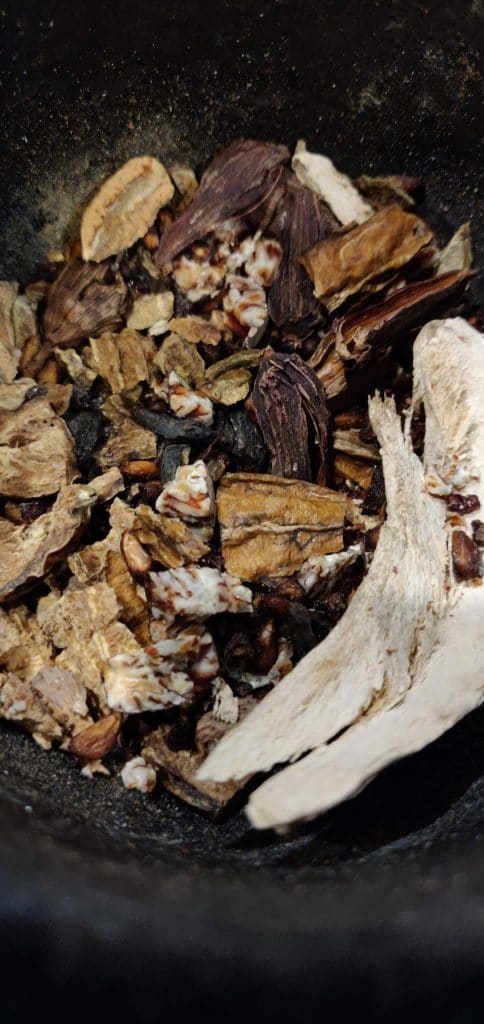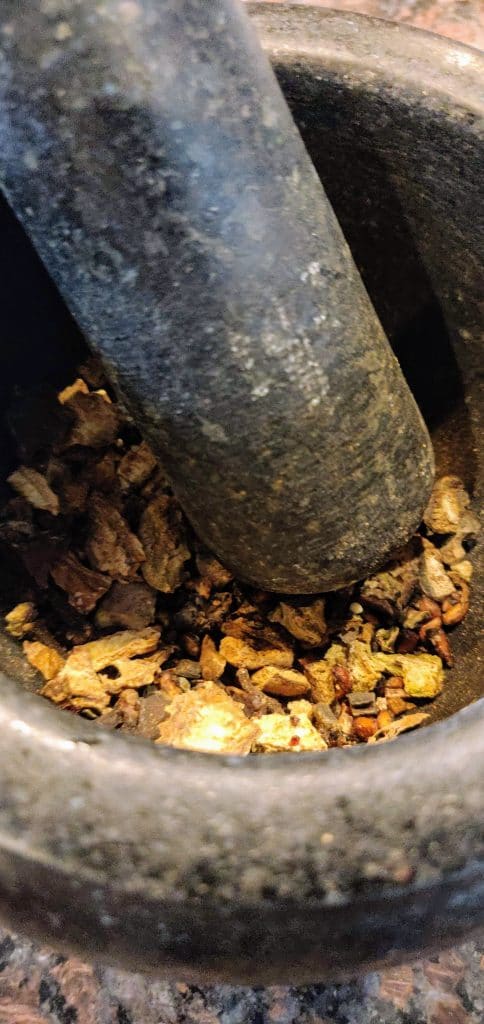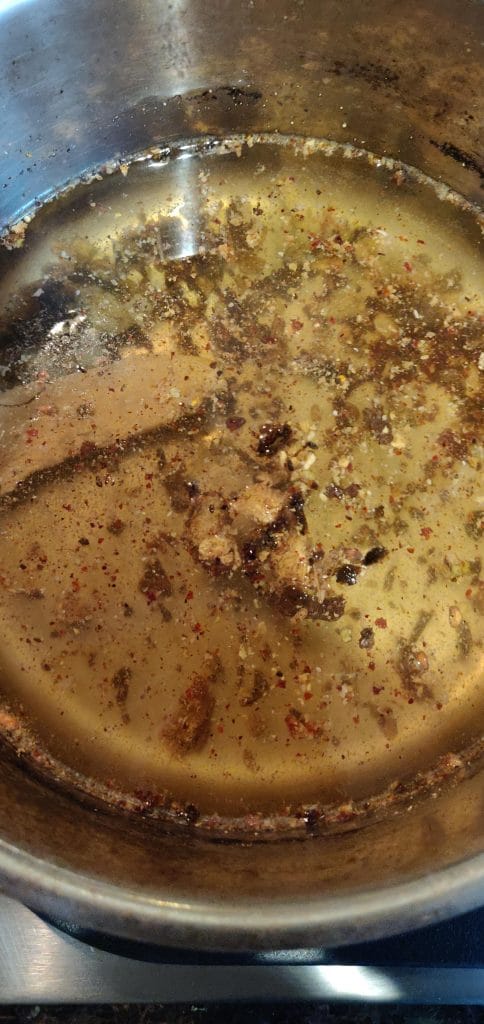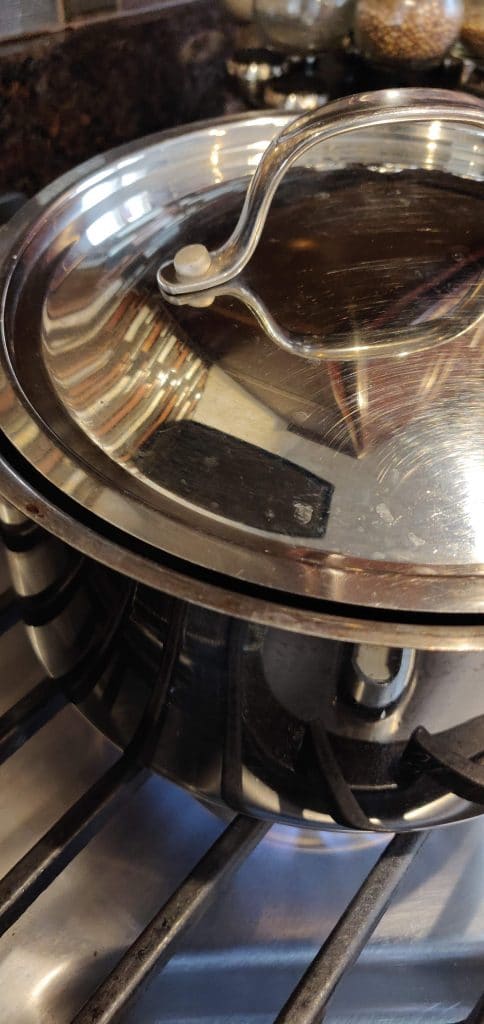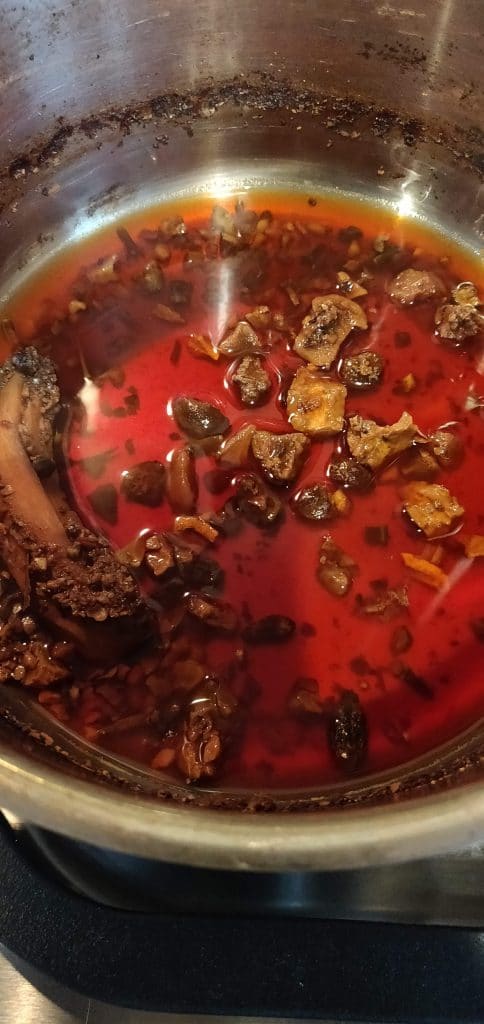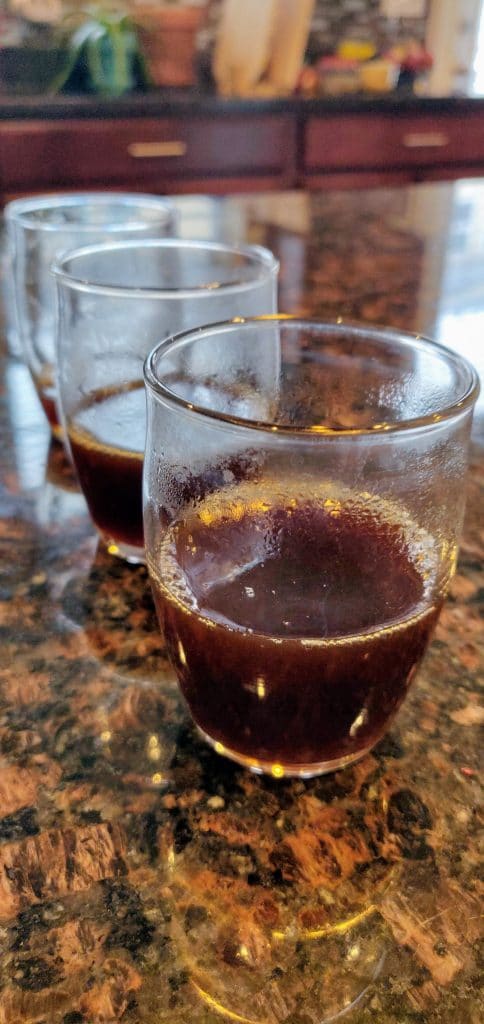There are many ways to compound medicinal substances in Tibetan medical science. Ingredients can be made into powders, pills, pastes, medicinal butters, calcinated powders, decoctions, and much more. Nevertheless, in today’s modern kitchen, making a medicinal decoction is one of the most practical methods by which to compound medicines. Furthermore, the decoction is particularly well-suited to treating hot-natured disorders such as the common-cold, the flu, and other contagious diseases.
Preparing a decoction is conceptually simple:
- Gather the desired medicinal substances and add liquid (usually water).
- Bring the mixture to a boil.
- Allow the solution to condense until the remaining solution is one-third of the original volume.
It is also important to mention what is stated in the last highlighted line: Any medicinal therapy must also be accompanied by the appropriate Diet and Lifestyle interventions.
Here is an example of the author preparing a decoction for cold and cough relief; the 8 photos (left to right) each correspond with the ensuing 8 paragraphs, below:
- Gather the appropriate whole medicines to make the desired formula. Whole medicines are ideal, as they are much more potent than powdered substances. The idea behind this is that powdered substances oxidize and lose potency much faster, due to increased surface area. With whole medicines, the substance’s potency is released at the moment it’s crushed and subsequently boiled, making the decoction that much more effective. For this formula about 16 different substances were used, but the main ingredients were: licorice bark, black cardamom, chebulic myrobalan, emblic myrobalan, belleric myrobalan, amchur slices, and dried pomegranate seeds. Medicinal formulas for decoctions can also be as simple as one ingredient, so do not get discouraged! It is, however, very important to note that one should act under the guidance of a competent health practitioner in making medicines.
- Use the mortar and pestle to crush the medicines such that the insides are exposed, so that they may more easily transfer their essence when boiled. Because we’re not making pills, there is no need to crush anything into a fine powder! I suggest attacking the very hard substances, first, to avoid making a mess and having your medicines fly out of the mortar. Certain kinds of chebulic myrobalan can be extremely hard.
- Place the crushed substances in a pot–preferably a steel or clay pot without any chemical lining.
- Add water knowing that you will need for roughly two-thirds of the final amount to evaporate before the decoction is complete. Add too little, and you give your substances little time to transfer essences into the surrounding liquid. Add too much, and the process will take much too long.
- Bring the solution to a boil, whilst covered.
- Once boiling, create a small space to encourage evaporation. It is also possible to keep the cover completely closed, however, the process takes that much longer.
- Once the resulting condensate is approximately one-third of the original amount, remove it from the flame.
- Pour your decoction into containers and add the appropriate medicinal vehicle: jaggery or maple syrup, cane sugar, or honey. Consult your health practitioner for which is most appropriate for you, and whether it should be consumed hot, cooled, or lukewarm, before, during, or after meals; also, it is important to know how often to consume the medicine during the course of a day, as well as how often during the course of a treatment.
Finally, it is important to reiterate the fact that medicines are only one level of four therapeutic levels in Tibetan medical science. For full effectiveness, medicines must be administered with the appropriate Diet and Lifestyle interventions. For more information on the four levels of therapy, proper Diet and Lifestyle practices, and much more, please consult The Eight Principles of Good Health: Modern Health Advice from an Ancient Healing System.



